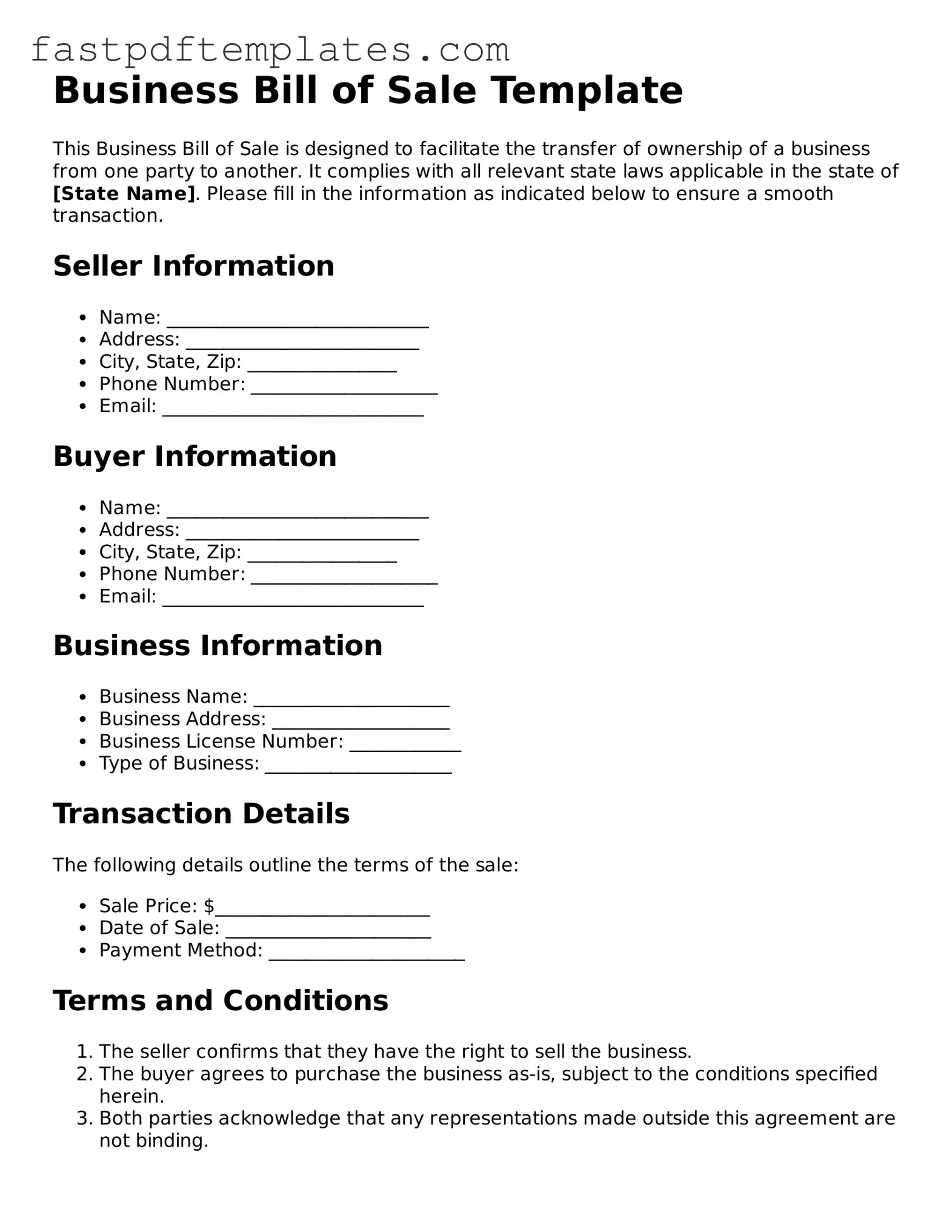The Business Bill of Sale form is similar to the Vehicle Bill of Sale, which is used when transferring ownership of a vehicle from one party to another. Both documents serve as proof of the transaction and outline key details such as the purchase price, the parties involved, and a description of the item being sold. Just like the Business Bill of Sale, the Vehicle Bill of Sale can also include information about any warranties or conditions of the sale, ensuring both parties understand their rights and responsibilities post-transaction.
Another document that shares similarities is the Equipment Bill of Sale. This form is specifically tailored for the sale of equipment, such as machinery or tools. Much like the Business Bill of Sale, it details the terms of the sale, including the condition of the equipment and any applicable warranties. Both documents serve to protect the buyer and seller by providing a clear record of the sale, which can be crucial in case of disputes or future transactions.
The Personal Property Bill of Sale is also comparable to the Business Bill of Sale. This document is used for the sale of personal items, ranging from furniture to electronics. Like the Business Bill of Sale, it captures essential information about the transaction, including the item description, sale price, and the identities of the buyer and seller. This form helps establish ownership and can be useful for tax purposes or if the item needs to be insured.
Similarly, the Real Estate Bill of Sale is relevant when personal property is included in a real estate transaction. While it primarily focuses on the sale of real property, it can also address personal items, such as appliances or fixtures. The Real Estate Bill of Sale, like the Business Bill of Sale, provides a record of the transaction, ensuring that all parties are clear on what is included in the sale. This clarity helps avoid misunderstandings about ownership after the sale is finalized.
The Lease Agreement can also be considered similar in that it outlines the terms of a business arrangement. While it does not transfer ownership like the Business Bill of Sale, it establishes the terms under which one party can use another's property. Both documents require clear communication between the parties involved and provide legal protection. They ensure that each party understands their rights and obligations, which is crucial for maintaining a good business relationship.
Lastly, the Gift Bill of Sale can be likened to the Business Bill of Sale in that it documents the transfer of ownership, albeit without a monetary exchange. This form is used when property is given as a gift. Like the Business Bill of Sale, it includes details about the item, the parties involved, and the intent behind the transfer. Both documents serve to clarify ownership and can be useful for record-keeping, especially for tax purposes or future reference.
